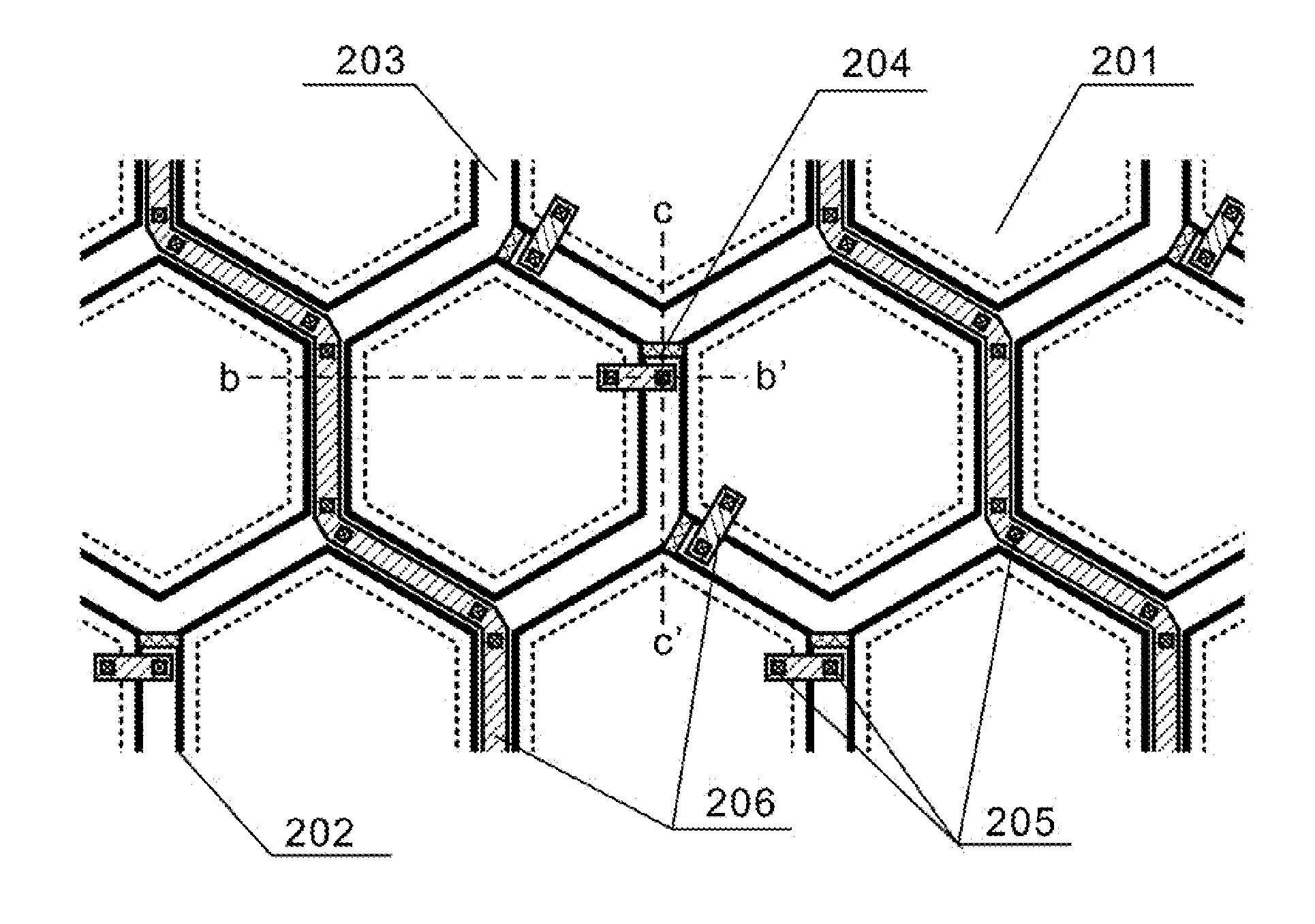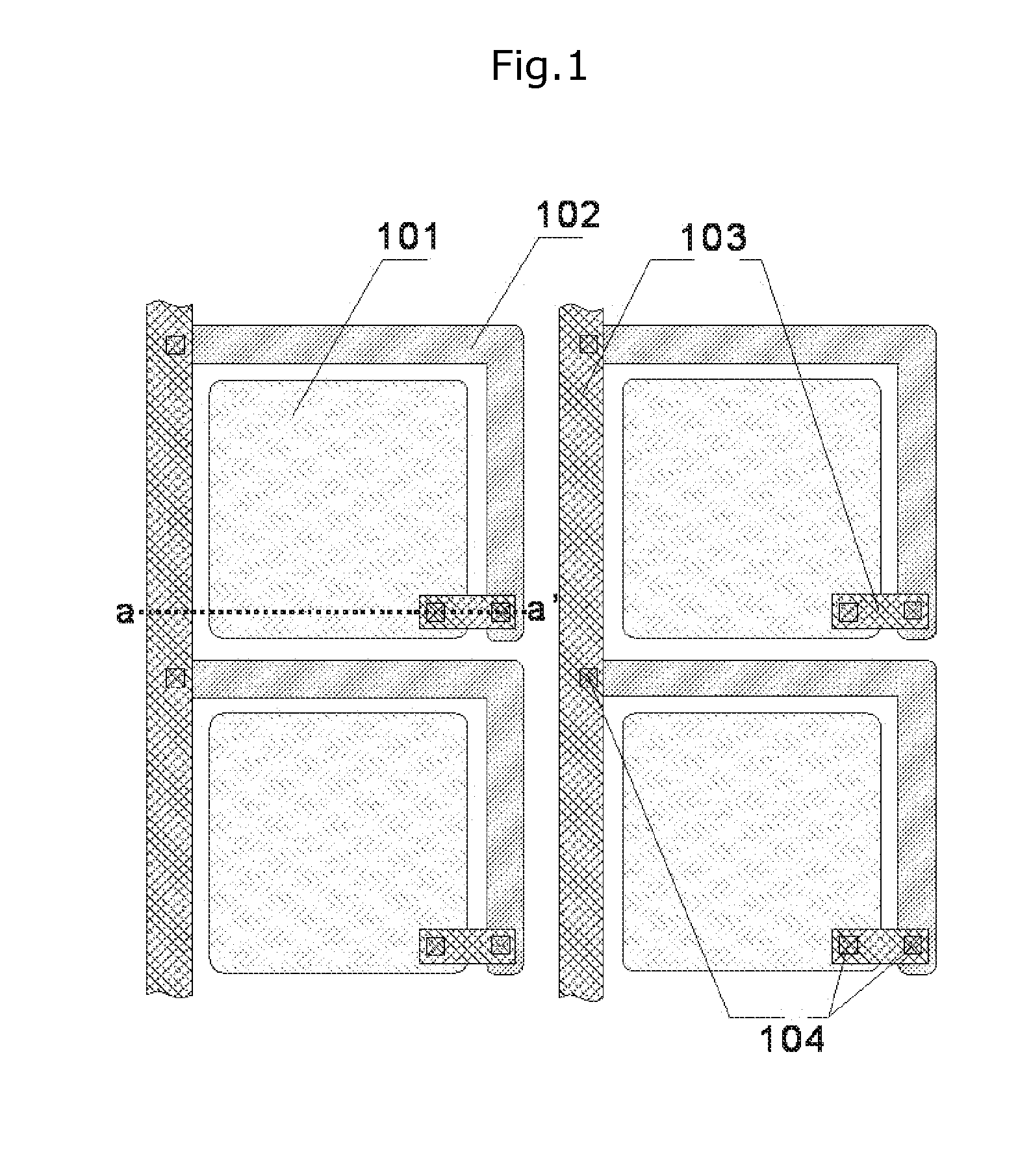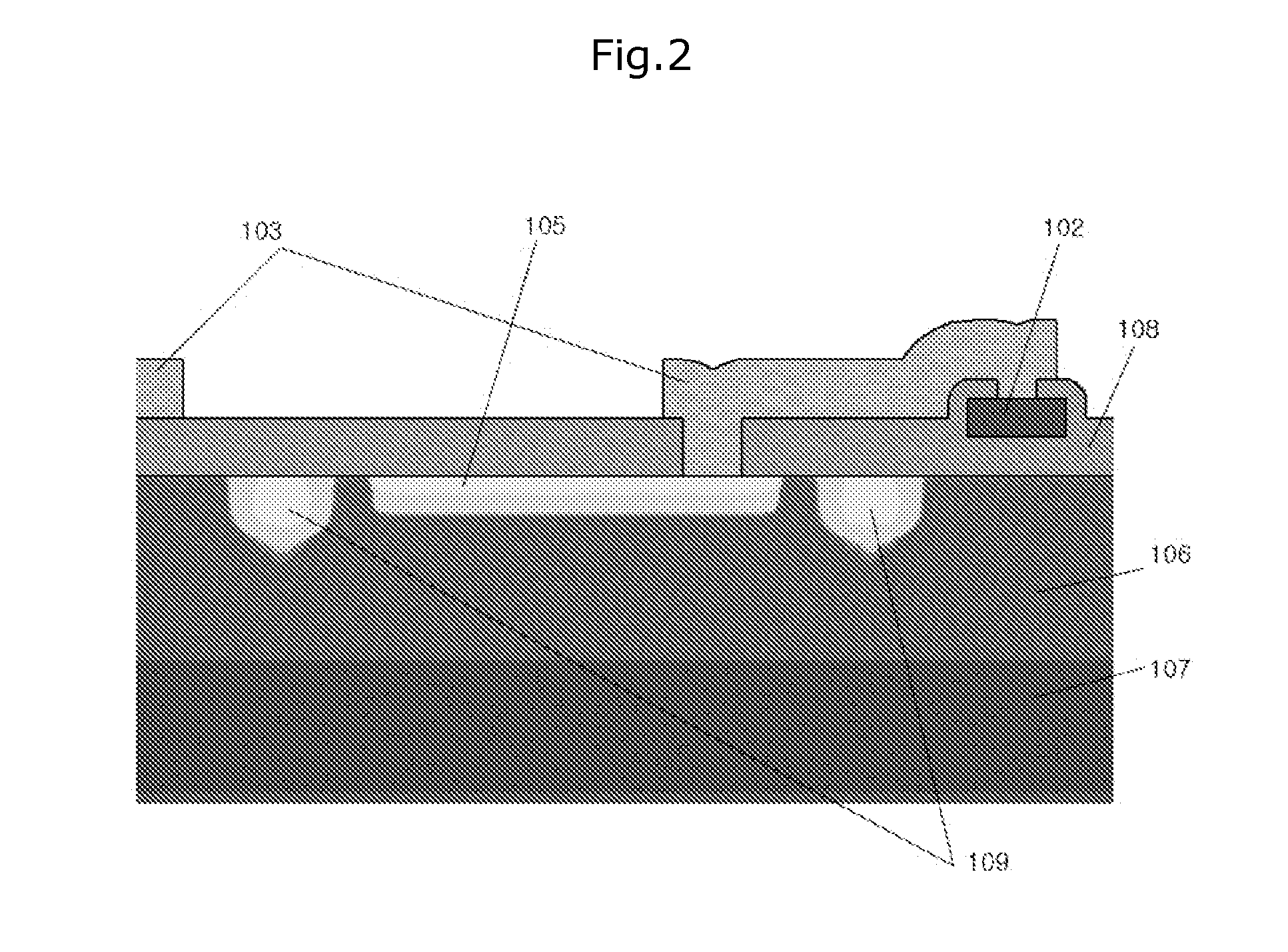Silicon photomultiplier with trench isolation
- Summary
- Abstract
- Description
- Claims
- Application Information
AI Technical Summary
Benefits of technology
Problems solved by technology
Method used
Image
Examples
Embodiment Construction
[0046]Hereinafter, a silicon photomultiplier with trench isolation in accordance with the present invention will be described in detail with reference to the accompanying drawings. In the drawings, the thicknesses of lines or the sizes of elements may be exaggeratedly illustrated for clarity and convenience of description. Moreover, the terms used henceforth have been defined in consideration of the functions of the present invention, and may be altered according to the intent of a user or operator, or conventional practice. Therefore, the terms should be defined on the basis of the entire content of this specification.
[0047]FIG. 3 illustrates a schematic plan view of a silicon photomultiplier according to an embodiment of the present invention, FIG. 4 illustrates a cross-sectional view of the device in FIG. 3, taken along the lines b-b′ and c-c′, and FIG. 5 illustrates a graph of the device fill factor comparing between hexagonal and square cell of the silicon photomultiplier.
[0048...
PUM
 Login to View More
Login to View More Abstract
Description
Claims
Application Information
 Login to View More
Login to View More - R&D
- Intellectual Property
- Life Sciences
- Materials
- Tech Scout
- Unparalleled Data Quality
- Higher Quality Content
- 60% Fewer Hallucinations
Browse by: Latest US Patents, China's latest patents, Technical Efficacy Thesaurus, Application Domain, Technology Topic, Popular Technical Reports.
© 2025 PatSnap. All rights reserved.Legal|Privacy policy|Modern Slavery Act Transparency Statement|Sitemap|About US| Contact US: help@patsnap.com



